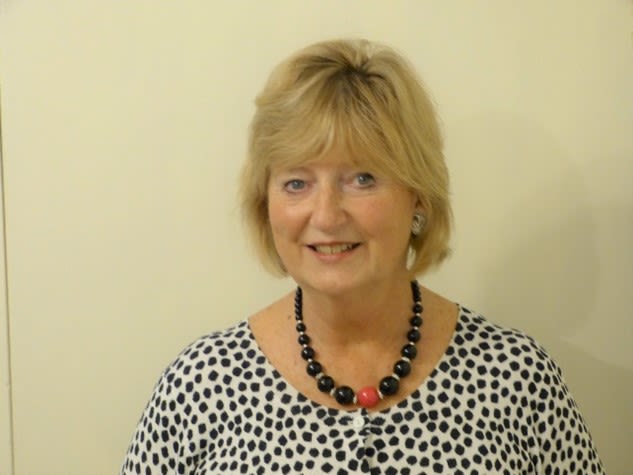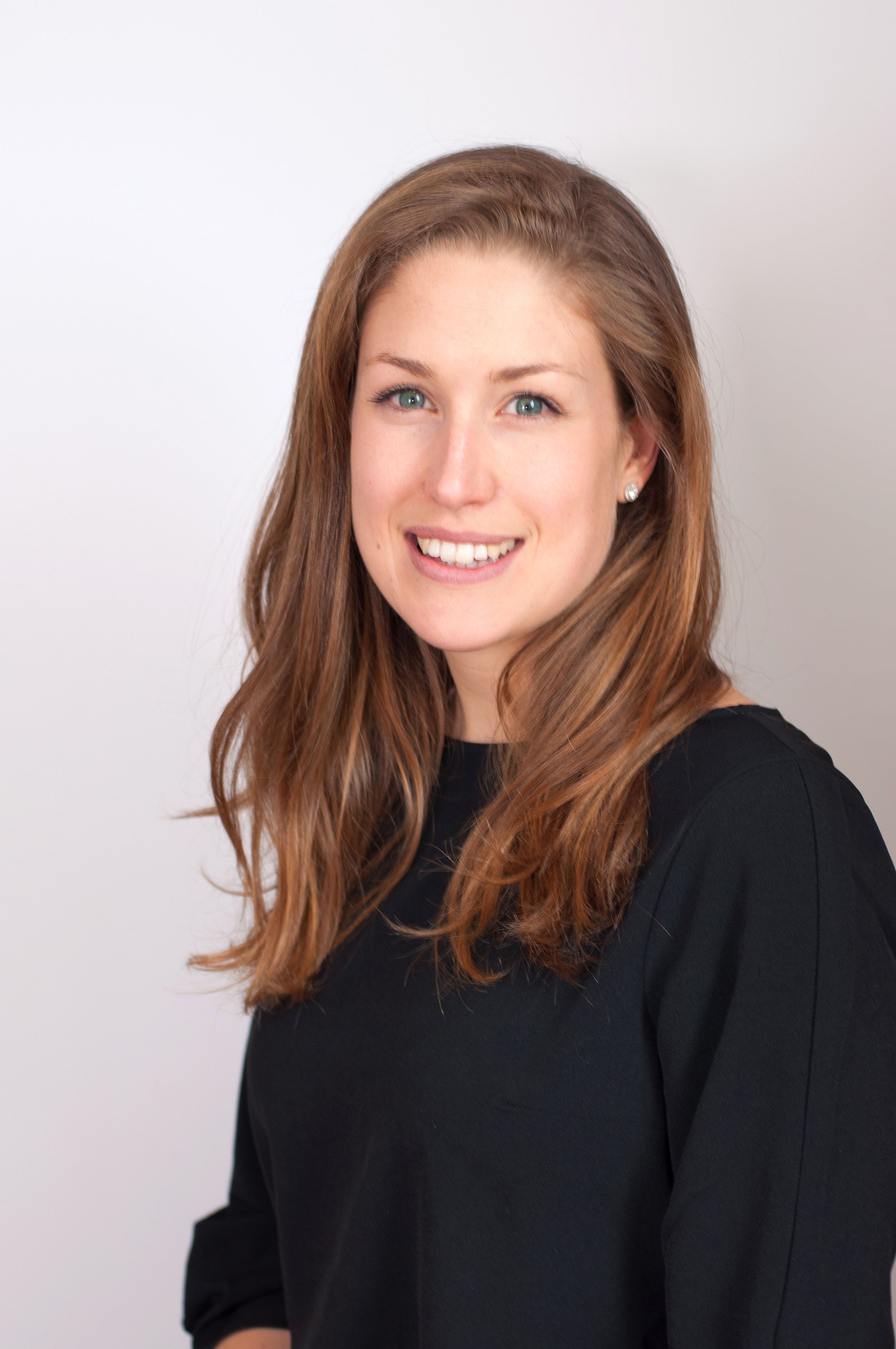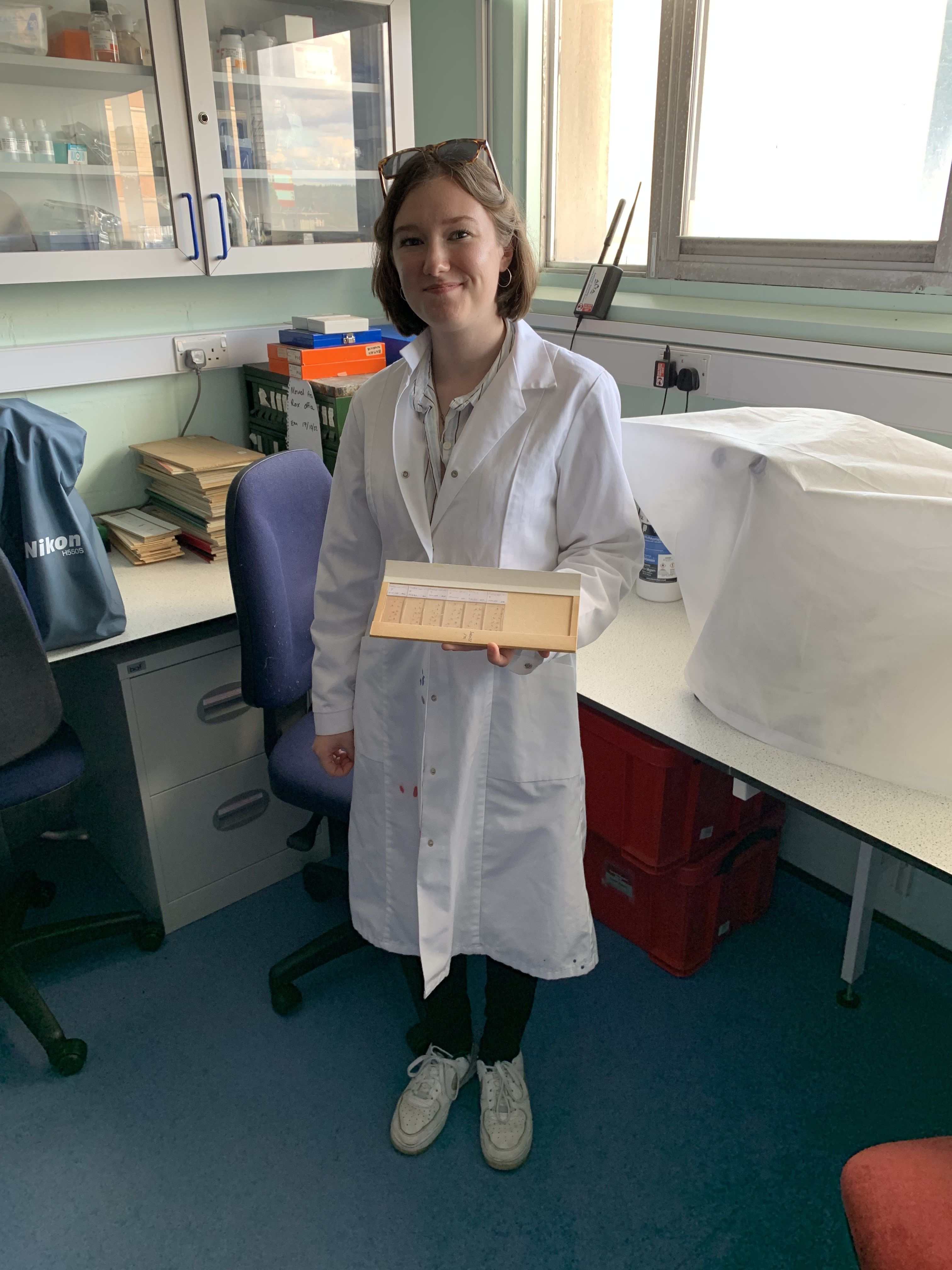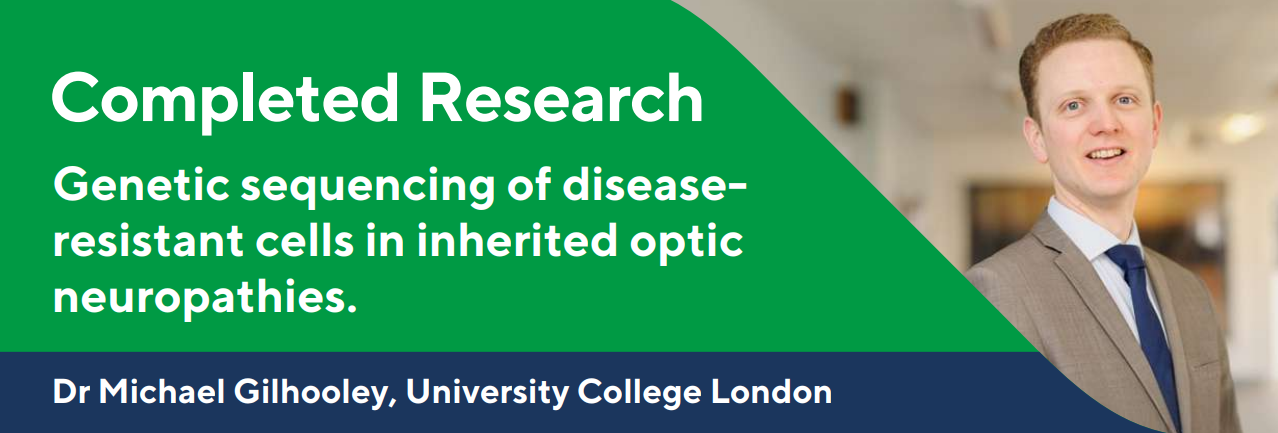Turning Science into Sight


Together, we can beat sight loss faster.
Who we are
We are a community of supporters, researchers, patients, healthcare professionals, and fundraisers, working together towards our shared goal: to bring forward the day when sight loss and blindness are a thing of the past.
What we do
We fund research that is poised to provide new and more effective solutions for patients - be it in diagnosis, prevention or treatment.



Message from the Chair
It has been yet another busy and fruitful year for Sight Research UK as we continue on our path to deliver our exciting research strategy; funding the most promising translational research to improve the lives of those living with, or threatened by, sight loss.
It has by no means been an easy year, with increased financial strain across the UK making fundraising ever more competitive. One can't fail to see how difficult the past months have been for people throughout the country and we are therefore so grateful to our loyal community, whose generosity ensures we can continue our purpose of turning science into real-world tools for diagnosis, treatments and prevention.
I'm delighted to be able to share this Charity Report for the financial year 2022-23 with you all. We are now seeing the results as funded projects come to an end and I hope you will enjoy learning about the work your kind support has enabled.
Lastly, I would like to take this opportunity to thank my fellow trustees for their unwavering dedication to the charity over the past twelve months. We sadly said goodbye to four members of the Board after many years of service but we have welcomed five new trustees and I am delighted that they have chosen to share their expertise and time for the benefit of Sight Research UK. I very much look forward to working with them.
My thanks to all our donors, volunteers, patients, researchers, team and trustees.
Carol Mayo
Carol Mayo
- Carol Mayo, Chair of Trustees -
Chief Executive update
As I reflect back on my first twelve months here at Sight Research UK there is an overriding sense that it was a year of growth, in all respects. For me there has been personal growth as I have spent my first year learning all I can about the organisation, the sector, the funding landscape and more. There is, of course, always more to learn, but what I am absolutely assured of is the growing need for research into vision and eye disease. With an ageing population and a lack of funding in the eye research sector, the pressures on our NHS and high street eye care providers are greater than ever and therefore it falls to us in the charity sector to ensure that eye research does not lag behind.
Thankfully, Sight Research UK goes from strength to strength. The charity was lucky to have the opportunity to grow its team of staff to support a number of exciting plans in the pipeline. We were thrilled to welcome a Marketing and Communications professional and we are looking forward to reaping the rewards that come from raising our profile.
Most importantly, the charity was able to commit funding to another Translational Research Award – the second since our new research strategy was launched in 2021. This grant is supporting Dr Hannah Dunbar at University College London as she seeks to find a novel, low-cost treatment for retinitis pigmentosa – a genetic condition affecting thousands of adults across the UK. We are thrilled to be backing Dr Dunbar's research and you can read more about this on pg.16.
This year saw us start out on a journey to grow our visibility and our reach. From speaking at the Sight Support West of England biannual event, to partnering with Specsavers to deliver our most successful Christmas campaign yet, we have fostered links with like-minded organisations who share our belief in the power of science and the amazing impact it can have on people's lives. We are looking forward to building on this over the coming years.
It was also a year of change as we said goodbye to four longstanding trustees who had given their time and expertise to the organisation for many years. We are indebted to them for the role that each of them played in the evolution of the charity, which leaves us now in such a positive and ambitious position. (The names of outgoing trustees have been listed on pg. 22.)
Lastly, I'd like to reiterate our heartfelt gratitude for the continued belief of our donors and other supporters, whose commitment means we can fund the most encouraging research with the greatest potential to help those affected by eye disease. We are nothing without our Sight Research UK community and we are excited to continue on this path with you all. Thank you.
- Charlotte Parkin, Chief Executive -
Research we are funding
Our currently funded grants range from proof-of-concept projects and PhD studentships to our large multi-year translational projects, funding research on the cusp of finding diagnostic tools and new treatments for eye diseases. All of our grants are awarded through open competition and assessed by independent experts in the eye research sector.
In our 2022-23 financial year, we had 25 active grants across 15 UK research institutions. In this time, we paid £190,760 towards existing grants and committed a further £163,061 to new grants.
As of 30 June 2023, our commitments to existing grant holders totalled £510,276.
Current Research
Can diet help to beat AMD – the UK's leading cause of blindness?


What is Age-related Macular Degeneration?
Age-related macular degeneration (AMD) is a progressive blinding disease that damages the macula - the part of the eye responsible for our central, detailed and much of our colour vision. It affects one in three people over the age of 75, with around 70,000 new cases reported each year.
Although age is the principal risk factor for AMD, it is a complex disease in which genetics and lifestyle also play a part. The fact that the underlying mechanisms of AMD are still not fully understood is a fundamental barrier to developing more effective treatments.
Under the supervision of Dr Arjuna Ratnayaka at the University of Southampton, PhD student, Anna Muir, is exploring the relationship between AMD and diet in the hope that new insights arising from her research will help to beat the UK's leading cause of blindness. We asked Anna to tell us more about her project and its potential impact.
Anna Muir, PhD Student
Anna Muir, PhD Student
"An unhealthy diet can increase your risk of developing AMD by up to 60%"
- Anna Muir -
What's the background to your project?
"Research studies involving thousands of participants have shown that an unhealthy diet – by which we mean one that's high in processed foods, red meat, and fat - can increase your risk of developing AMD by up to 60%. We also know that eating dark green leafy vegetables and yellow-pigmented fruits can help to slow the progression of diseases like AMD and diabetic retinopathy.
What we don't know currently is what is happening at the cellular and molecular levels within the eye to cause both these harmful and positive effects. That's what my research aims to address.”
What will your project involve?
"In a previous study, the team here at Southampton found that when mice were fed a high fat diet, the structure of their retinas changed and showed signs of developing disease. My experiments will build on this evidence by seeing if retinal disease can be rescued by first feeding the mice a high fat diet, and then a normal diet again. I'll examine their eyes at specific time points to get a good idea of exactly what is happening in their retinas in response to their diet, and when it is happening.
I'll also be looking at what happens to human retinal cells when they are treated with oxidised cholesterol. This is a fatty substance, which has been found at significantly higher levels in the retinas of people with AMD than in the retinas of people with healthy eyes.”
What is personalised medicine and how could this research help?
"Personalised medicine is about tailoring treatment to the patient. A one-size-fits-all approach doesn't fit every person's individual genetics, biochemistry, or lifestyle. So, for example, while certain vitamin and mineral supplements have been shown to slow the progress of AMD, they do not work for everyone – and this could be explained by differences in people's genetic makeup.
For instance, people with high levels of oxidative stress are more susceptible to AMD. Having high levels of oxidative stress may be due to genetic and lifestyle risk factors. Such individuals in particular may benefit from dietary interventions.”
What are some easy changes people can make to look after their eye health?
1. Stop Smoking.
2. Adopt a more healthy, balanced diet.
“An example of a diet that's been shown to reduce the odds of developing AMD is the “Mediterranean style” diet. This is made up of a high intake of fruits and vegetables combined with healthy fats like olive oil, and lean meats and fish. This diet is also low in highly processed foods."
What might the long term impact of your research be?
“Recent research suggests that just 53% of ophthalmologists advise those at risk of AMD of dietary changes that they could make. We hope that through our research, we can raise awareness of the importance of diet and how it can protect your vision.”
“The “Mediterranean style” diet... is made up of a high intake of fruits and vegetables combined with healthy fats like olive oil, and lean meats and fish."
- Anna Muir -
Thank You
This research has been made possible thanks to the support of a great many charitable trusts, to whom we are very grateful. We would especially like to thank The Robert Luff Foundation for its extremely generous contribution.
Completed Research
Treating diabetic macula oedema.
Genetic sequencing of diseaseresistant cells in inherited optic neuropathies.
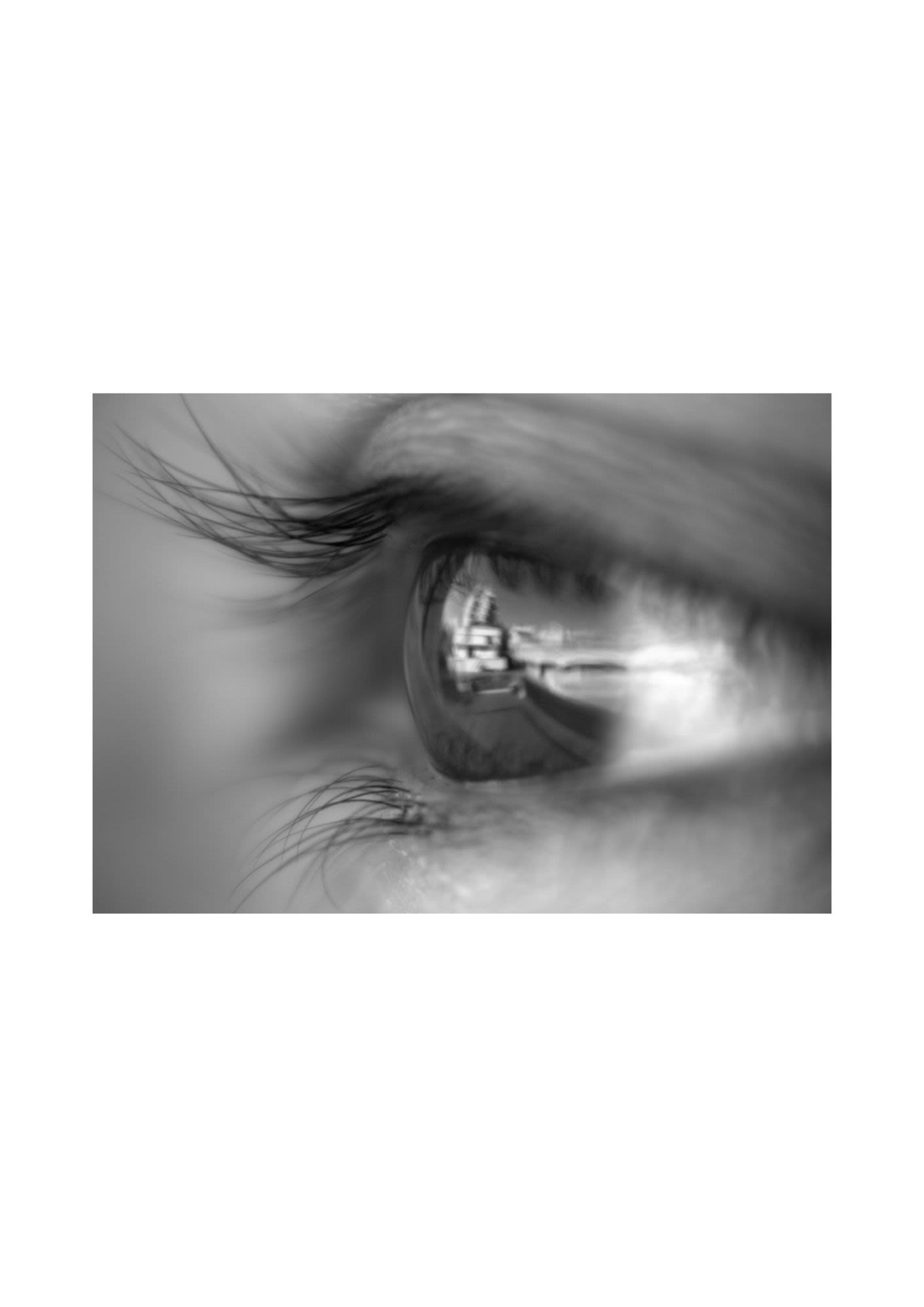

Discovery research funded by Sight Research UK has paved the way for what could be the first topical treatment for diabetic macula oedema – a risk for anyone living with type 1 or type 2 diabetes.
In macular oedema, new blood vessels in the retina leak fluid causing the macula to thicken, which leads to vision loss. Every week, around 13,000 people in the UK who are experiencing symptoms are treated in hospital with eye injections to stop their vision worsening. However, these injections are expensive, can cause side effects and aren't effective for all patients.
For nearly two decades, Professor David Bates has been working towards improving these treatments. He had already identified molecules that could prevent blood vessels from leaking by inhibiting the production of a protein called Vascular Endothelial Growth Factor (VEGF). Working with a chemist from Australia, his team created a small-molecule drug called SPHINX31 that was able to diffuse into tissues easily, and which had the potential to be administered as eye drops.
Funding from Sight Research UK enabled a PhD project to test SPHINX31 in a multi-stage disease model. This project aimed to determine whether the team’s new drug was effective in targeting a gene called SRPK1, which regulates VEGF, and whether this could prevent blood vessel fluid leakage in the retinas of animals with diabetes.
Findings published in the American Journal of Physiology showed that the drug was a viable treatment for macular oedema. This evidence enabled Exonate Ltd – a spin out company founded by Professor Bates – to use the results from our SPHINX31 project to develop EXN407, a drug with the same gene-targeting properties.
In a clinical trial, patients with mild symptoms were given the drug as eye drops for three months. Results show that the treatment is safe, and appears to reduce the thickening of the macula and fluid leakage from the retina, similar to the effects of antibody injections. EXN407 will now go to a second clinical trial on patients with more advanced macular oedema to see if their vision improves.
“Ultimately, you can't treat a disease if you don't know the detail of what causes it, right down to the individual molecules. That's why funding projects like these is critical to finding better treatments.”
- Professor Bates -
Inherited optic neuropathies are very rare conditions, which cause incurable blindness. However, although patients lose their vision, other eye functions, such as response to light, still work.
Previous research on a tissue sample from a patient with an inherited optic neuropathy observed differences between the cells in the optic nerve that connects the retina to the brain. Most of the retinal ganglion cells, which provide messages to parts of the brain used for seeing, had died. But a small number of cells called melanopsin ganglion cells, which go to parts that control other functions such as circadian rhythm, had survived.
Dr Michael Gilhooley's Sight Research UK-funded project examined melanopsin ganglion cells to find out why they were so disease-resistant. Isolating the different cells in a small tissue sample, the team used a novel technique called single cell RNA sequencing to determine which genes were turned on in the surviving melanopsin ganglion cells compared to the retinal ganglion cells that had died.
Single cell RNA sequencing was unsuccessful on their first attempt, which used tissue from mice with the same naturally-occurring mutation as humans with inherited eye conditions. However, the technique produced good results when they switched instead to using retinal ganglion cells that had been engineered from stem cells formed from skin sample donations from patients with an inherited optic neuropathy.
The team is now analysing the data generated to identify and validate some of the most promising genes that occur in the surviving cells. This 'shortlist' will form the hypothesis for a larger funding proposal to look at these genes of interest in more detail. The work could have implications not only for patients with inherited optic neuropathies, but also for those with more common diseases of the optic nerve, such as glaucoma.
Dr Gilhooley said: “Eye disease affects so many people but is underfunded compared to areas like Parkinson's, Alzheimer's or cancer. I can't overemphasise how important these small grants are, particularly to early-career researchers like myself, because they allow us to develop speculative ideas. If these work, they will bring in much larger grants that are going to have a much bigger impact.”
“Eye disease affects so many people but is underfunded compared to areas like Parkinson's, Alzheimer's or cancer. I can't overemphasise how important these small grants are, particularly to early-career researchers like myself, because they allow us to develop speculative ideas. If these work, they will bring in much larger grants that are going to have a much bigger impact.”
- Dr Gilhooley -
The Big Give Christmas Challenge 2023
We'd like to say a huge thank you to everyone who helped make our Big Give Christmas Challenge 2023 the most successful yet. Together, you raised a fabulous £12,364 in online gifts – a wonderful result! Especially grateful thanks is due to Specsavers for generously matching all these donations – making them go twice as far to exploring a new treatment for people with a devastating eye condition.
Retinitis Pigmentosa (RP) is a leading cause of irreversible blindness in people under 60. It is the name given to a group of inherited eye conditions that cause deterioration of the retina – the light-sensitive layer of tissue at the back of the eye, which is crucial for sight. Most people with RP develop a level of sight loss that has a profound impact on their daily life.
Research has shown that exposure to some wavelengths (colours) of light can improve vision in older people with healthy eyes. Dr Hannah Dunbar (UCL) is leading a pilot study of people with RP to see if light therapy can improve their visual function too. Two groups of participants will test two different colours of light and the results will be compared to see which colour is better.
If successful, this study could be an important first step towards a simple, non-invasive treatment to slow the progression of sight loss in RP, helping people retain their independence for longer.
We're glad we went to Specsavers!
Not everyone is able to give online to the Big Give Christmas Challenge and we're grateful to everyone who donated to our wider appeal in support of Hannah's project. Your kind gifts raised the final total to £31,560* Thank you for being Christmas stars, one and all.
* Includes Gift Aid
Different ways to get involved
From activities requiring (almost) zero effort to going the extra mile – there are lots of ways to get involved and help us beat eye disease.
Recycle for research
Having a spring clean? Did you know you can de-clutter and raise money at the same time? Through our recycling partners, we accept not only stamps and foreign currency but jewellery (anything from plastic beads to old broken gold chains), watches, cameras, games consoles, MP3 players, satnavs, tablet computers, video games and accessories, and printer cartridges.
If you have items to recycle, please get in touch with us first and we'll let you know where to send them.
Set yourself a fundraising challenge
If you want to get fit and have fun, or maybe you know someone who likes a challenge and is looking for a great cause to support, we have exciting news! Thanks to our new partnership with Run for Charity, we have access to a huge range of challenge events across the UK. Whatever your interest or level of fitness, we're sure there's something for you. Run a half marathon, jog with your dog, or complete a virtual challenge from the comfort of home. The choice is yours!
You can register for many of these events directly through our website but if you can't find what you're looking for, please get in touch for advice.
Corporate Partnership
From team building to raising brand awareness, corporate partnerships can offer many benefits. Why not choose us as your charity of the year? Or make your company's gift go twice as far through the Big Give Christmas Challenge (see p16). On that note - we'd like to thank our friends at Earth Science Partnership for their kind gifts in lieu of Christmas cards – for three years running!
Any questions?
If you'd like more information about these ways to support eye research, please get in touch and we'll be very happy to help.
Call us: 0117 325 7757
Email us: hello@sightresearchuk.org
Search us: www.sightresearchuk.org
Connect with us: Sight Research UK mailing list



A gift in your Will could help her change the future


Did you know that 1 in 5 people in the UK will experience sight loss in their lifetime?
Perhaps you are one of them? Sight loss and blindness make for a very different lived experience, often making everyday tasks and independence difficult. Without new treatments for blinding diseases, the number of people with sight loss is predicted to double by 2050. We can't turn back time, but with your help we might just change the future. One of the most powerful ways to support sight-saving research is through a gift in your Will. No matter how big or small, these lasting gifts enable researchers to find faster ways to diagnose and better ways to treat eye disease, helping to put an end to sight loss for good. What will your legacy be?
If you'd like to leave a gift in your Will, please call us on 0117 325 7757 or email hello@sightresearchuk.org. We fund world-class research into all eye diseases affecting adults and children and will be happy to discuss your wishes with you.
“The reasons for wanting Sight Research to have a legacy is two fold. The first is for my late husband who did so much for the Bristol charities for the blind. Another reason is that many years ago I looked after an elderly blind man once a week. One day he greeted me at the door, tears streaming down his face but radiantly smiling. He told me had walked out for air and seen a blue haze in a garden; he had seen the first crocuses of Spring. He kept saying that he never thought he would ever see that again. I realised the joy that even a minute amount of sight can bring and I then decided to do what I could if only by donating.”
- Diane Liell, Legacy Pledger -
"I now have wet AMD in both eyes. I hope that my legacy will help to support the great effort being made in eye disease research, so that others do not share my experience."
- Dr David Hill, Legacy Pledger -
Our Finances 2022-23
We allocated £163,061 to research*
*As well as spending £209,023 to meet existing grant awards, we also committed an additional £163,061 to new grants.
We employ 5 staff
Thank you to our donors
Without our community of supporters, we could make no progress towards new treatments for sight-threatening disease and we would like to thank everyone who has made a donation in the 18 months to 31 Dec 2023, including those who prefer to remain anonymous. While space prevents us from acknowledging you all here, we are truly grateful to everyone whose gifts, large and small, are helping to beat sight loss and blindness.
We received donations in memory of:
- Shirley Cant
- John Cliff
- Joyce Coombs
- Myra Crabtree
- John Cyril
- David Easty
- Mary Miller
- Hilde Nilsson
- Janet Marie Robson
- Evelyn True
- Jennifer Wetton
We received legacies from:
- Rita Easterbrook
- Sheila Firth
- Ivy Harris
- Margaret Irwin
- Brian Martin
- Frank Phoenix
- Sheila Pinkstone
- Anthony Spencer-Caple
- Kathleen Walker
- John Way
Donors who made gifts over £500
- Anonymous donors (11)
- Clifford Bell
- Geoffrey Church
- Spencer Cleminson
- Barry Cook
- John Cottrell
- Felicity Crofts
- Robert Drewett
- Susan Harrow
- H Hickman
- Alan Johnson
- Diane Liell
- Alan and Joan Martin
- Michele Martin
- Sheila Miller
- Angela Morris
- Charmaine Mukhrejee
- Philippa Neaverson
- Jane Pope
- John and Mary Prior
- Imelda Rice
- Nicholas Rogers
- Serena Salvatore
- Diane Saunders
- Sir James Tidmarsh
- Nebula IT
- Sir Samuel Scott Of Yews Trust
- Specsavers
- The A J Hill Charitable Trust
- The Basil Brown Charitable Trust
- The Basil Samuel Charitable Trust
- The Benefact Group
- The Brian Shaw Memorial Trust
- The C M Lowe Charitable Trust
- The Carr-Gregory Trust
- The Cecil Rosen Foundation
- The Condon Family Trust
- The Dixie Rose Findlay Charitable Trust
- The Enid Slater Charitable Trust
- The Family Rich Charities Trust
- The Gilbert and Eileen Edgar Foundation
- The Imp Trust
- The John Raymond Tijou Charitable Trust
- The Linden Charitable Trust
- The M E Hawkes Charitable Trust
- The Medical Research Council
- The Owls of Pill
- The Reed Foundation
- The Robert Luff Foundation
- The T F C Frost Charitable Trust
- The Thriplow Charitable Trust
- The Tyldesley Charitable Settlement
- The White Oak Charitable Trust
- The Worshipful Company Of Lightmongers Charitable Trust Ltd
Thank you to our volunteers
We are indebted to our many kind volunteers for giving so generously of their time and expertise in the 18 months 1 July 2022 - December 23. None of the work that we do would be achievable without you, and we cannot thank you enough for your unwavering support.
We would also like to pay a special thank you to our long-standing Trustees and Research Advisory Board members whose terms came to an end during this time. You have been instrumental in shaping Sight Research UK's ambition to fund research that will benefit people with sight-threating disease as quickly as possible. We are incredibly grateful for the lasting contribution you have made to the charity.
Trustees
- Mr Simon Bowker (Treasurer)
- Dr Dolores Conroy
- Dr John Cottrell MA FCA **
- Mr Robert Drewett DL **
- Dr Rosie Gilbert
- Prof John Greenwood
- Mr Clive Hetherington
- Mr Philip Jackson (Vice-Chair)
- Prof Richard Lee **
- Mrs Carol Mayo (Chair)
- Mr Adam Ross MB ChB **
- Miss Serena Salvatore
- Mr John Swarbrick
Vice-Presidents
- Prof John Armitage OBE
- Prof Andrew Lotery MD FCROphth
- Prof John Marshall MBE
- Lady Wills
Research Advisory Board
- Prof Catherine Bowes Rickman **
- Prof Matthew Campbell (Vice-Chair)
- Prof Tim Curtis Prof John Greenwood **
- Prof Robyn H Guymer **
- Dr Pirro Hysi
- Dr Hari Jayaram
- Prof Glen Jeffery
- Prof Keith Martin
- Prof Reinhold Medina
- Prof James Morgan
- Dr Arjuna Ratnayaka (Interim Chair 2023-24)
- Prof Sobha Sivaprasad (Chair) **
- Dr Marta Ugarte
- Prof Patrick Yu-Wai-Man
Seed Panel
- Dr Jenny Dewing
- Dr Hannah Dunbar
- Dr Michael Gilhooley
- Dr Philippa Harding (Chair)
- Dr Liying Low
- Dr Naseeb Malhi
- Dr Ben Mead
- Dr Mike Powner
External Peer Reviewers
- Prof Paul Bernstein
- Prof Ben Burton
- Prof Kathleen Boesze-Battaglia
- Dr Amanda Carr
- Prof Robert Casson
- Prof Mike Cheetham
- Prof Robert Finger
- Prof Jan Kremers
- Prof Tara Moore
- Prof Miguel Seabra
- Dr Zhichao Wu
- Prof Heping Xu
** stepped down in the 18 months to 31 Dec 2023
Help us make sight loss a thing of the past.
www.sightresearchuk.org/donate
Join Sight Research UK's Mailing List (mailchi.mp)
Sight Research UK is Charitable Incorporated Organisation, registered with the Charity Commission of England and Wales (1156134).

